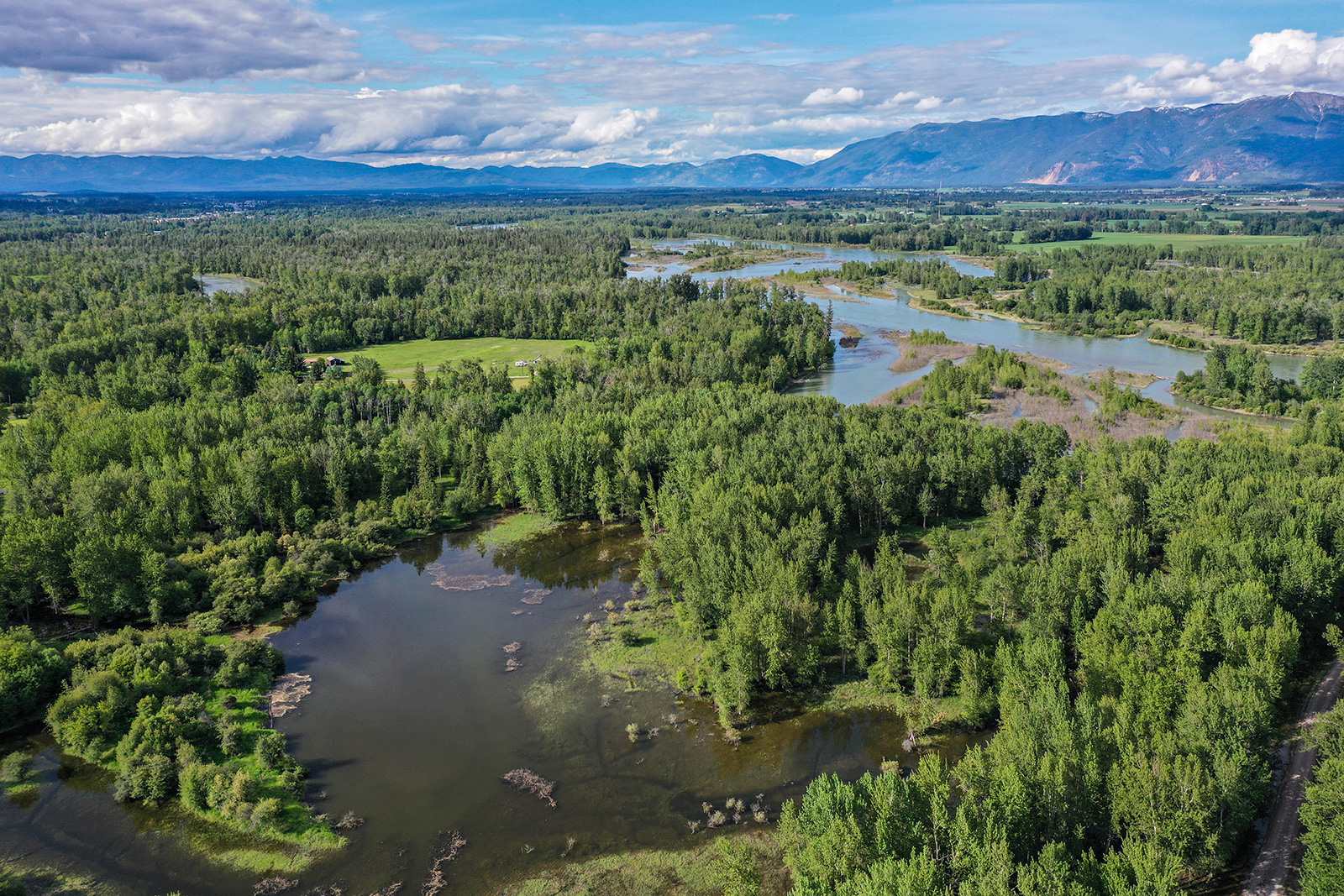The Path to Permanently Protect Owen Sowerwine
Flathead Land Trust is building support for a conservation easement on the popular DNRC-owned natural area at the braided confluence of the Flathead and Stillwater rivers
By Tristan Scott
For decades, local land stewards have cobbled together a string of temporary licensing agreements to preserve public access to a popular natural area near the braided confluence of the Flathead and Stillwater rivers east of Kalispell, on an ecological gem known as the Owen Sowerwine Natural Area.
Located in the heart of one of the most complex sections of the Flathead River, amid a filigree of intertwined channels, islands, sloughs, wetlands and riparian forest, Owen Sowerwine borders more than a mile of the Flathead River, a mile of the Stillwater River and at least 1.3 miles of interlaced channels connecting the two rivers.
In recent years, the special recreational-use licenses guaranteeing public access and habitat protection to the area have been issued in two-year increments by the Montana Department of Natural Resources and Conservation (DNRC), casting uncertainty over the long-term future of Owen Sowerwine and prompting a local land trust to pitch a plan to furnish permanent protections on the 442-acre parcel, which is managed as State School Trust Land.
Recently, the Flathead Land Trust offered to purchase a conservation easement agreement on Owen Sowerwine, fulfilling DNRC’s monetary mission to the School Trust in exchange for its protection from development in perpetuity.
“Owen Sowerwine provides excellent bird, fish and wildlife habitat and helps sustain the integrity, healthy function, and water quality in the Stillwater and Flathead rivers and Flathead Lake,” according to the Flathead Land Trust, which is encouraging members of the public to submit comments in support of the project to the DNRC before Oct. 31.
The Owen Sowerwine Natural Area already enjoys some designations as critical wildlife habitat, including recognition by the state as an Important Bird Area providing habitat for over 150 species of birds, as well as for federally listed grizzly bear and bull trout. Meanwhile, a patchwork of adjacent land protections girding Owen Sowerwine helps provide an “interconnected network of over 12,000 acres of conserved open space and quality habitat at a landscape scale along 50 miles of the Flathead River and north shore of Flathead Lake,” according to Flathead Land Trust.
It also provides public access for outdoor activities and conservation education opportunities for local schools only a half mile from Kalispell’s city limits.
“It is an ecological gem and community asset,” says Laura Katzman of the Flathead Land Trust.
Owen Sowerwine has long been recognized for its natural and community values, Katzman explained. In the 1970s, local citizens tried to get the area protected under the Natural Areas Act of 1974; however, the designation was never approved. For the past 40 years, leases and licenses held by Flathead County, Montana Audubon and the Flathead Audubon Society have allowed the area to be managed for its natural habitat. Fees associated with the leases and licenses were paid to compensate the State School Trust, but required renegotiation whenever the licenses expired. The proposed conservation easement would replace the current license and ensure that the Owen Sowerwine would be managed for its natural habitat in perpetuity.
According to Kara Neal, a forester with the DNRC, all School Trust Land administered by the state needs to generate income for K-12 education in Montana. Without a permanent funding mechanism such as a conservation easement in place on Owen Sowerwine, DNRC would have to consider other land uses for the area, such as cabin sites, residential uses or commercial uses to generate funds for Montana schools.
Under the current proposal, the conservation easement would generate predictable annual revenue to benefit K-12 education following an investment of the initial lump sum in the permanent trust fund, Neal explained.
“Our mission on State School Trust land is to make money for the trust, but we also recognize the value of wetlands and the unique ecological value of these two rivers coming together,” Neal said. “So, administering this area as a conservation easement in perpetuity as opposed to issuing a special recreation-use license every two years and just kind of filling the gaps, it makes sense from an administrative standpoint.”
According to Katzman, DNRC could also consider a land exchange with a private landowner for similar waterfront property found elsewhere in Montana if that would result in more funding for Montana schools; however, both stakeholder groups and agency officials say a conservation easement is a good fit for the area.
“This land doesn’t have tremendous value in terms of traditional development or timber sales,” Neal explained further, “and we have kind of exhausted our normal options that we might consider in order to fulfill our school trust obligations.”
Comments can be emailed to Kara Neal at [email protected] or mailed to:
Department of Natural Resources and Conservation, Attn: Kara Neal, 655 Timberwolf Pkwy., Ste. 2, Kalispell, Mont., 59901.
Additional information about Owen Sowerwine is also available on the Flathead Land Trust website at flatheadlandtrust.org.